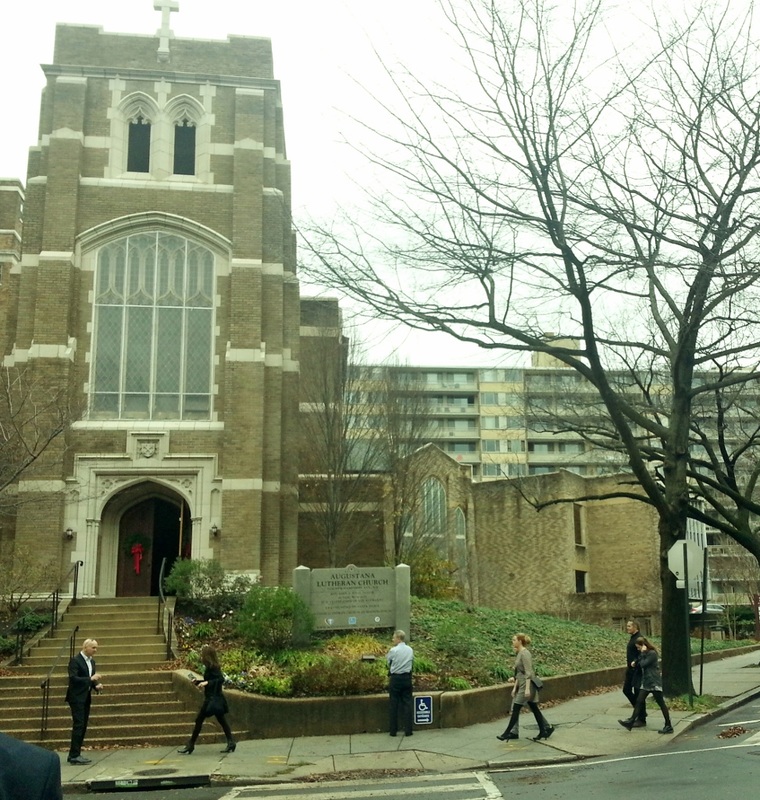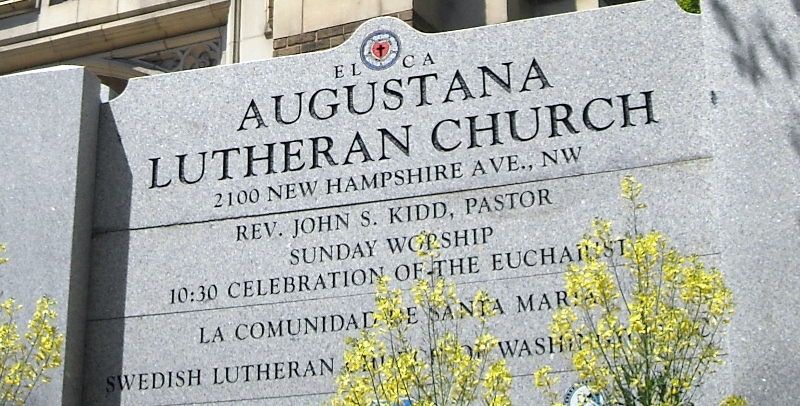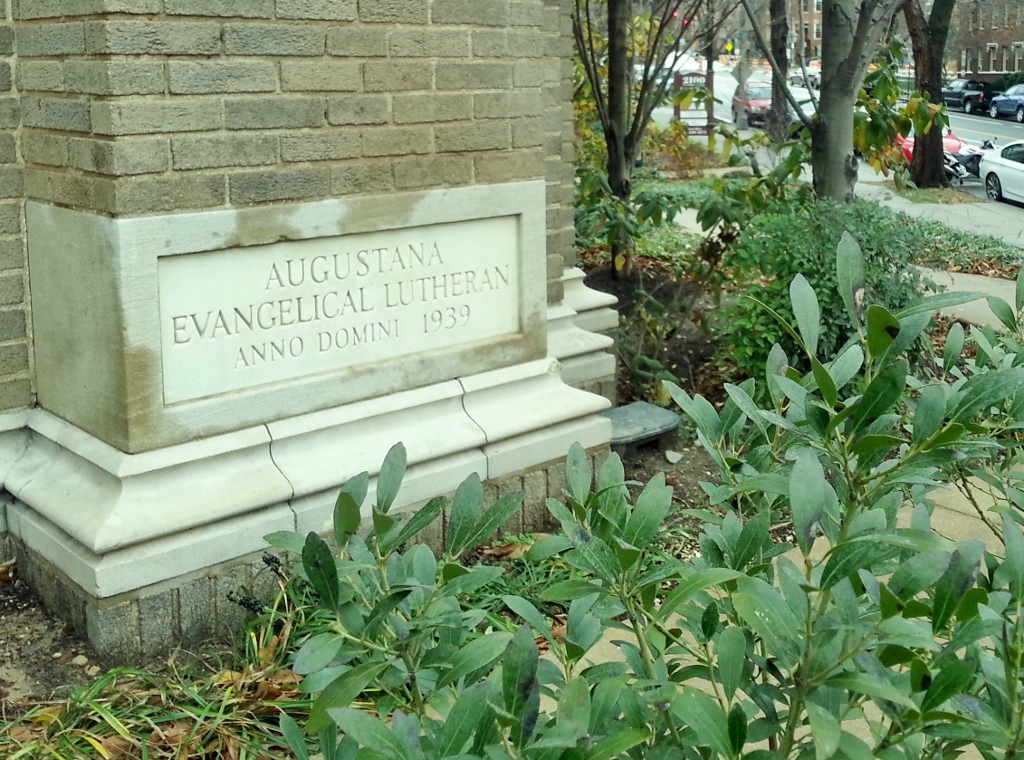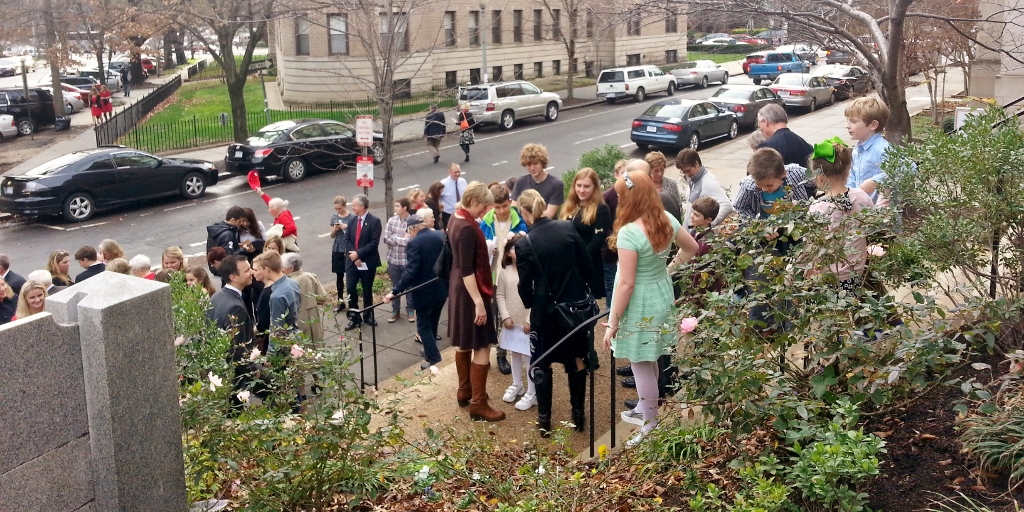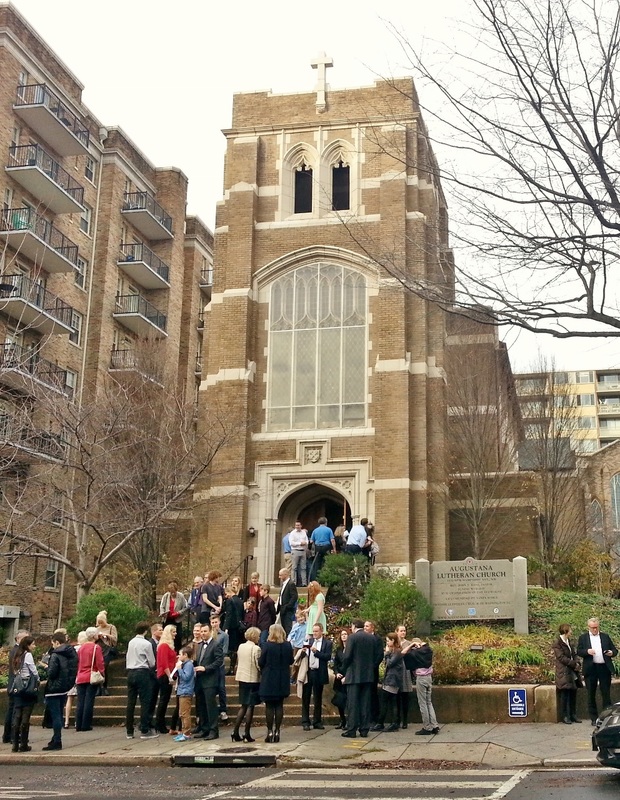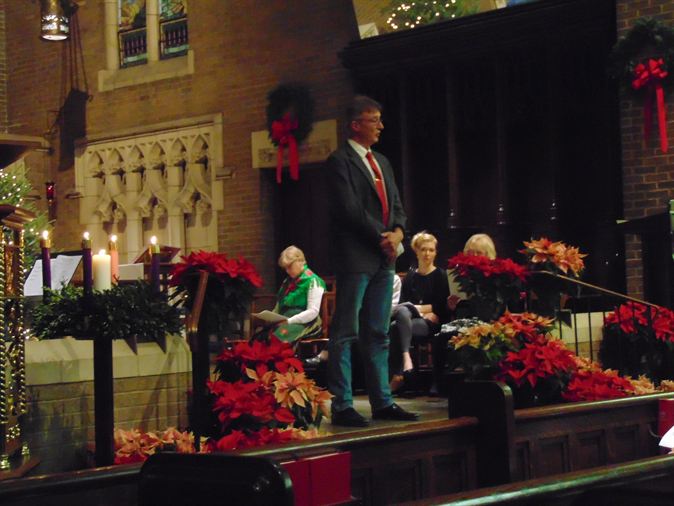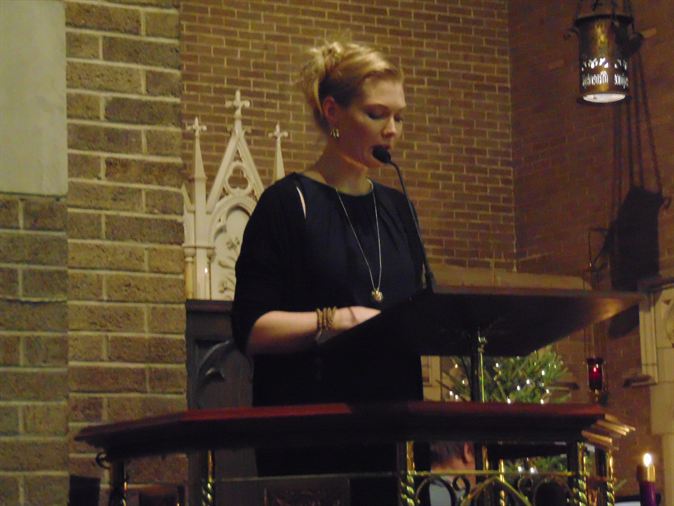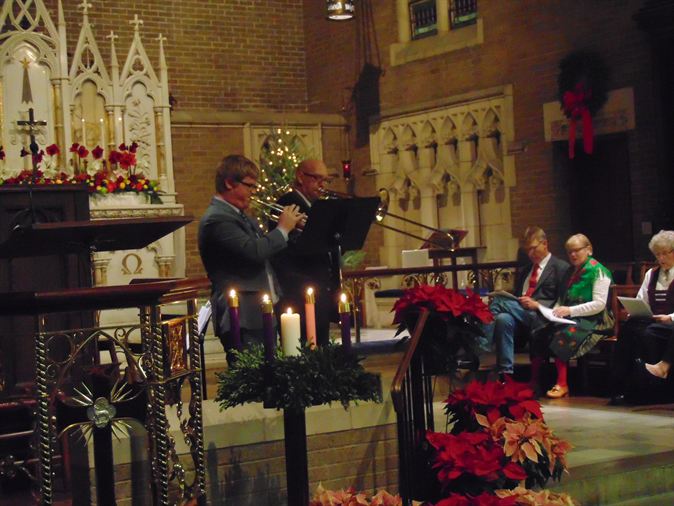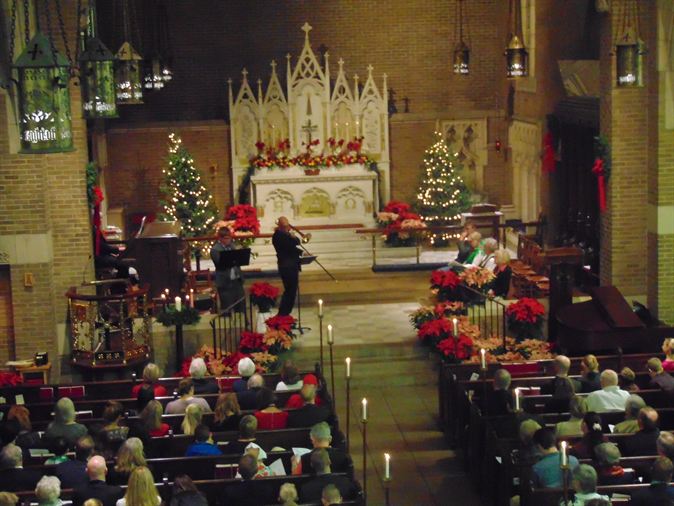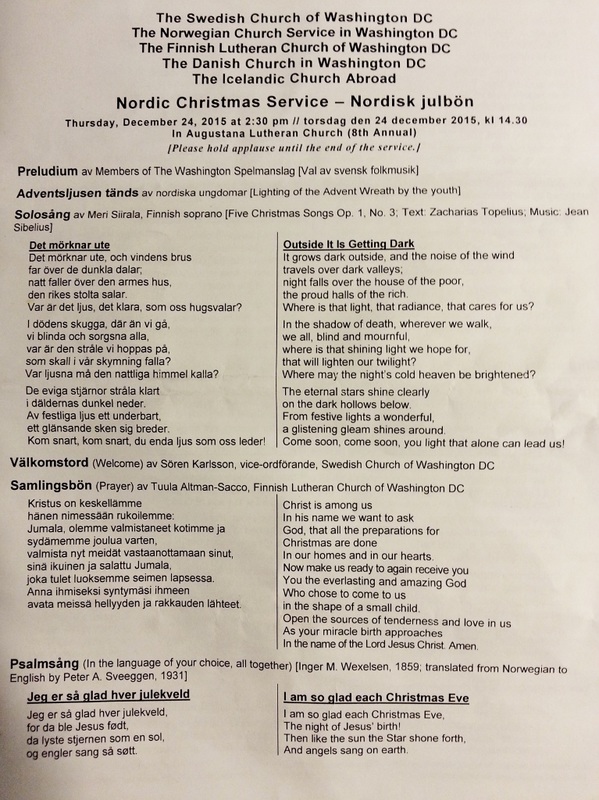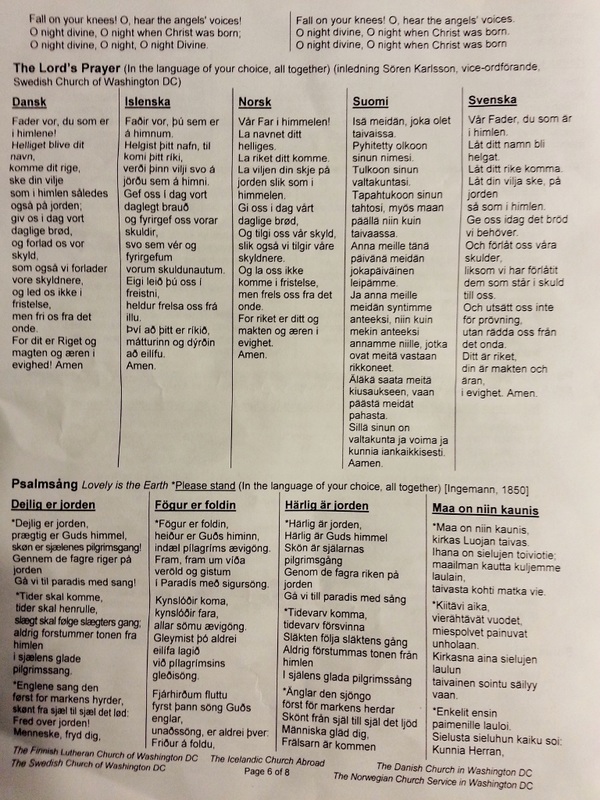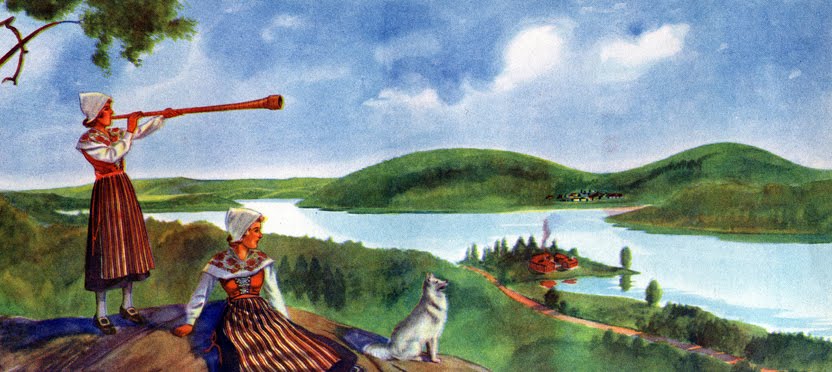I attended several Christmas Eve services with family. One was at the Swedish Lutheran church in Washington, D.C. (whose existence I was unaware of; my father had apparently been before. They hold worship service in Swedish on the first Sunday of each month). It was actually a combined Christmas Eve service of the Swedish, Norwegian, Finnish, Danish churches of Washington D.C., and the Icelandic Church Abroad. In fact, it was Swedish led and used their space. The limits of egalitarianism: One of the churches’ names does have to come at the top of the program (see below)…
I appreciated this service. It reminded me of Estonia (the closest I’ve yet gotten to Scandinavia), which is another Lutheran country except that it was, for some reason, about 70 Fahrenheit [20 C] out that day.
Everything alternated between different Scandinavian languages but there was just as much English as anything, including the introductory remarks by the man whom I took to be the main pastor (a Swede). I originally suspected that this was for the benefit of people like me. More likely, though, now that I think about it, is that the Scandinavians prefer speaking in English to each other over picking one of their closely-related languages (which would be possible, except for the Finns). In other words, a Swede could speak to a Norwegian in Swedish and the latter would get it fine, I think, but to ensure smooth relations, neutral English is preferred. Or so I’ve heard. I regrettably lack enough experience with real Scandinavians to confirm it.
In Swedish:
Var Fader, du som ar i himeln.
Lat ditt namn bli helgat
Our Father, who art in heaven
Hallowed be thy name
Himmel [Swedish: himeln] means “Sky” and “Heaven” in German. “Heilig” [Swedish: helgat] means “sacred” or “holy” in German. The other words are all quite close to English. Given some context and cultural awareness, I think I could basically understand this Lord’s Prayer in Swedish and the others (except Finnish) in written form.
There were several musical performances. The most unique was a man playing a long alphorn-like instrument. I learn it is called neverlur in Norwegian and näverlur in Swedish (näver means birch and lur means trumpet). It was the first time I’d seen this instrument. The one the man played was even longer than this one that I find online:
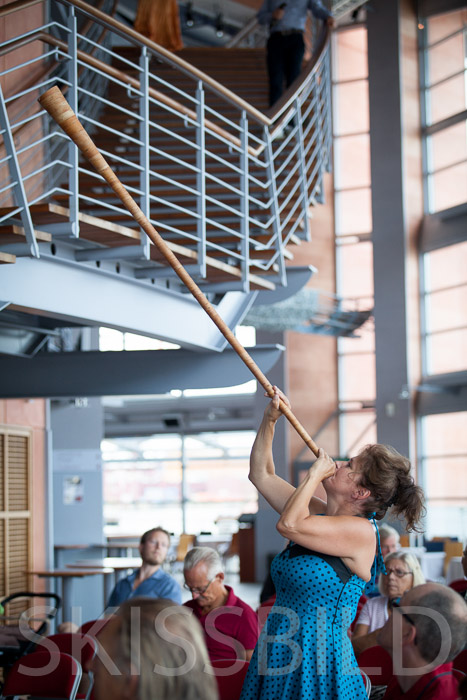
It seems that some version of this instrument goes back to the Northern European Bronze Age in the centuries around 1000 BC.

